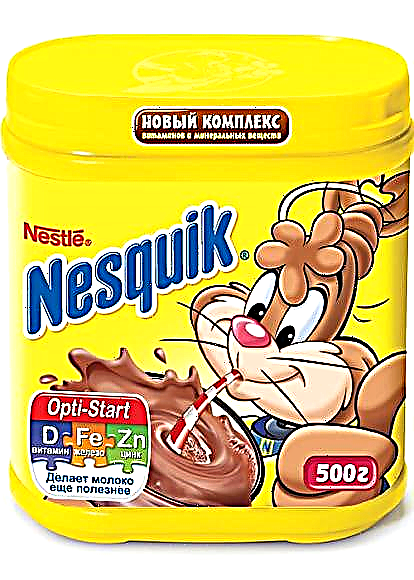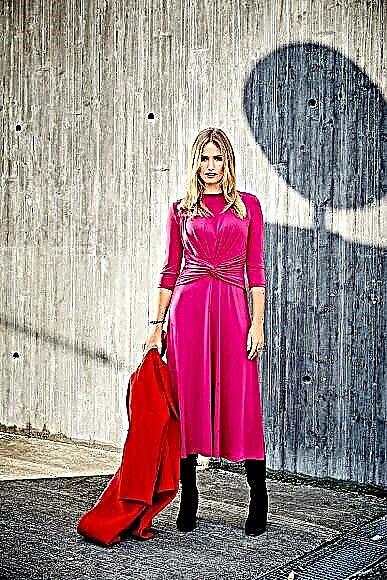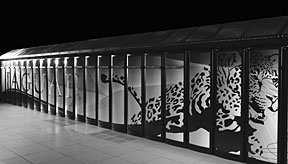Tie, as you know, the most common accessory of a classic men's suit.
However, thanks to modern fashion trends, it has become a real attribute of the masculine style and an object of expression of the individuality of its owner.
Officially, it is believed that the tie appeared in ancient Rome, and was used for purely practical purposes - they closed their neck to avoid colds. But it was used for decorative purposes only during the 30-year war (1618 - 1648), when the Croatian mercenaries, who were on the side of the French king, proudly tied a tie around the neck. The very Russian name "tie" has German roots (Hals - neck, Tuch - shawl). After the 1968 revolution, wearing this attribute became irrelevant, and subsequently the need for his presence in the wardrobe turned into a question of style and taste.
Thanks to new fashion trends, in our time, ties are worn with various shirts, even from jeans or velveteen. The classical width of the product itself for our times has stopped at around 8–9 centimeters, and the length ranges from 132–147 cm.
The most popular material of the accessory itself is silk, rather saturated deep colors. The collar of a shirt under a tie is often left unbuttoned with one button, and the knot itself is made quite large and careless. Color, material, method of supplying a tie are a form of expression of male self-positioning.
For most representatives of the stronger sex, it is important that this attribute is convenient and associated with comfort, a certain highlight and own attitude to the world of its owner.
A special chic in the selection of such an accessory for a business suit is the so-called restrained correctness. The tie is matched to tone or only slightly different in shade from a shirt or jacket. A radically opposite move is often used, and the desired effect is achieved due to color contrast.
If we talk about leading brands in the field of tailoring decent ties, then, as a rule, these are the same companies that sew good men's suits: "Hugo Boss", "Trussardi", "Moschino", "Calvin Klein", "Roberto Cavalli", "Jean Paul Gaultie", "Lanvin", "Daniel Hechter", "Corneliani" and others like them. In addition, fashion designers will never ignore such companies as "Pal Zileri", "Brioni", "Canali", "E. Zegna", "Gucci", "D&G", "Burberry". One of the most striking and undeniable leaders in the field of creating this men's accessory is the Italian company "Tino Cosma", whose ties have long been a symbol of elegance and sophistication.
In addition to the specific style inherent in a particular brand, the creation of ties is also different in connection with the individual vision of the designers themselves. So, for example, Claude Montana prefers to create plain ties in the color of a jacket or shirt.
Hubert de Givenchy sees two options for the development of fantasy. For a tie with a printed pattern, the fashion designer comes up with floral motifs, as if scribbled on a dark or bright background with a quick brush. In ties with a weaving pattern, the same flowers prevail, only tiny ones resembling daisies or shamrocks on a dark background (dark blue, burgundy, black, red).
Thierry Mugler creates very unusual and bright ties. The basis, for example, is jacquard graphics: stripes, stars, crosses, contrasting in texture and color (black, blue, burgundy in contrast with white).
Jean Patou prefers a very elegant style, lost, however, outside of time and fashion. At the heart of his creations: geometric patterns, drops of water, small peas on a fabric of brown, burgundy, dark blue and saturated green colors.
And Georges Resch, in turn, prefers a dynamic style in everything. A minimum of picturesque design on the background of a silver, gray or blue base creates a false impression of a monotonous tie. Then, as upon closer examination, a very clear pattern can be distinguished.
But, of course, in addition to the fantasies of the designers themselves, the associations and meaning invested in the tie by its owner are important. Only then will it be not just another addition to the general style, but an organic individual indicator of the owner’s sense of self.
Photo: burdafashion.com.






